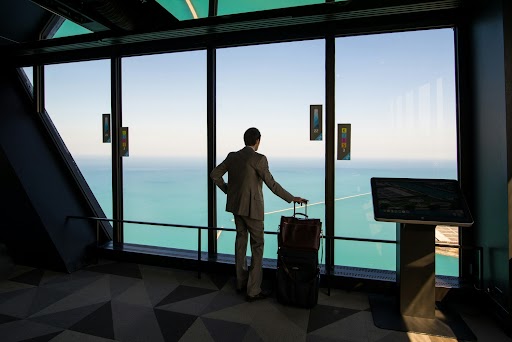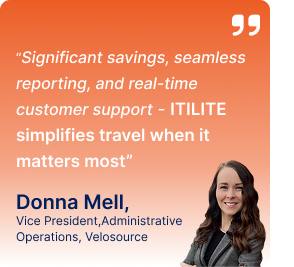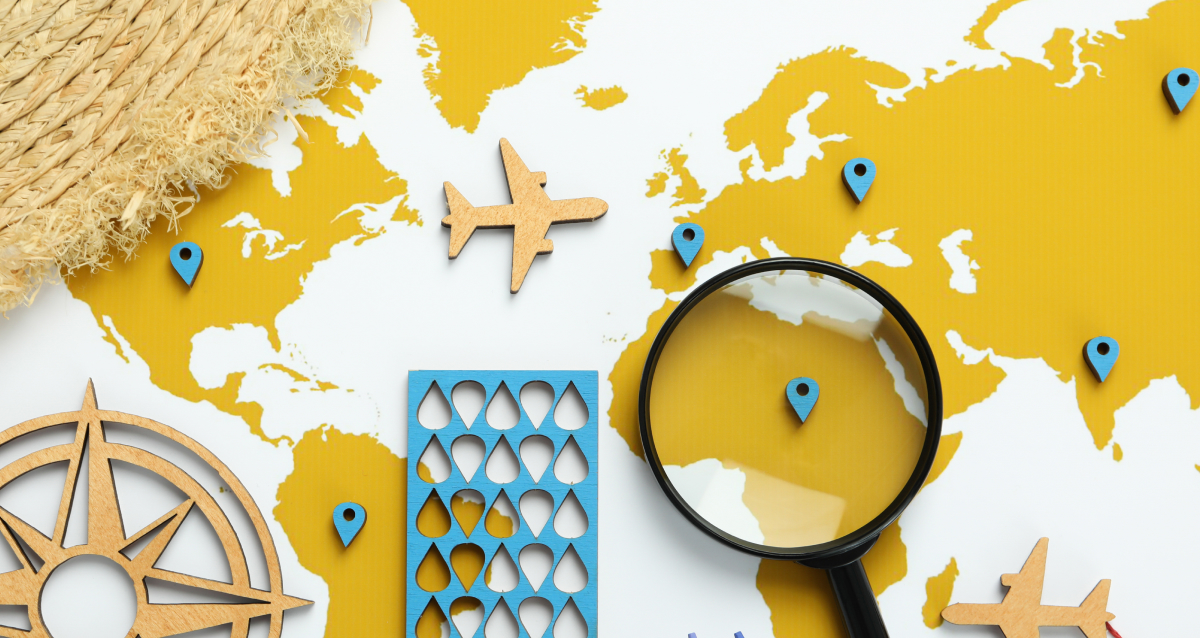Business tourism isn’t the glamorous kind that lands on Instagram. It’s airport carpets, badge lanyards, and conference coffee. But this is the travel that moves industries. A medical staffing team flying in to onboard nurses for a new hospital wing. A manufacturing supplier visiting a plant to troubleshoot a production line in person. An IT team meeting a client onsite to kick off a system migration that just can’t be explained on Zoom.
The Global Business Travel Association (GBTA) indicates that business travel spending projected to hit around $1.57 trillion in 2025.
The fact that organizations continue to perceive high value in in-person meetings is a positive sign, especially when there are higher values at stake. In this blog we’ll unpack what business tourism is, why it’s important, how it has evolved, and where it’s going.
What is business tourism?
Business tourism is travel with the main purpose of work, meetings, client visit, training, trade shows, conferences, conventions, exhibitions, and incentive travel. If work is the reason for the trip to the destination, then the travel is business tourism, even if travelers include a weekend after the work in the same destination.
Business tourism can include, for example, day trips domestically, long-haul travel internationally, or multiple destinations but with the expectation of getting the most value out of the trip.
Why is business tourism important?
Relationships and complicated transactions happen faster with the opportunity for in-person interaction. In addition to company impacts, business tourists spend money in a destination’s economy.
Three major advantages are:
- Faster decision-making and higher close rates.
- Better onboarding and training outcomes.
- Stronger industry visibility and networking at conferences and expos.
What are the different types of business tourism?
There are several clear categories of business travel. Understanding which one you are engaged in helps define the cost, logistics, and anticipated return on investment (ROI).
Traditional business travel
These are short, focused trips. They are for client calls, site visits, vendor meetings, or regional sales calls. Usually, it takes 1-2 days, a high frequency, and a high necessity.
Incentive travel
Travel used as a reward for top performers, channel partners, or loyal customers. It blends leisure with recognition and works as a motivation and retention tool. Basically a “thank you” disguised as a holiday.
Conferences or exhibitions
Trade shows, industry conferences, and exhibitions will draw hundreds or thousands of people together. They are find and lead generation engines too.
In what manner has business tourism changed over the years?
Business travel isn’t about constant flights anymore. With hybrid work, companies travel less often but with a clearer purpose, team offsites, onboarding weeks, and key project workshops instead of quick routine trips.
Travel platforms now make booking, approvals, and expenses smoother, and with budgets under watch. This ensures that every trip is worth it.
In the healthcare staffing industry, for instance, teams are now implementing hiring or training days in anticipation cities rather than flying recruiters everywhere for in-person interviews, screen and hire more candidate in fewer trips.
What benefits does business tourism provide?
There are advantages to business tourism that go beyond boarding passes and expense reports. Here are some key benefits.
- Accelerated decisions: Being face-to-face accelerates decision-making, eliminates any confusion immediately, and gets people actioning instead of email chains.
- Increased trust: Trust is built through eye contact, sharing food, and small human connections that cannot be matched by video conferences.
- Enhanced learning: Learning on site is retention better, because people learn best in the environment where the actual work is done.
How to organize a business trip (practical checklist)
Planning makes travel an investment rather than a cost center. Use the following short checklist to make every trip more valuable:
Set the priorities. Be specific. For example, is the trip to close a deal, train people, generate leads, or onboard a new hire?
Select the right trip type. One-day trip, multi-day trip, multi-city trip? For multi-meeting trips, consider bundling meetings together to avoid many quick trips.
Book through corporate channels. Book through your travel management company (TMC) or platform. This allows the company to ensure compliance with company policy, capture agreed-upon rates, and aggregate invoices.
Plan duty-of-care. This includes tracking travelers, emergency contact options, insurance coverage, and health protocols.
Plan for recovery and networking. Don’t schedule meetings back-to-back. Productive discussions require mental energy, so leave some time for recovery.
Set measurable KPIs. Capture success based on what was intended- deals closed, leads converted, trainings completed, partnership milestones- really anything!
Capture the ultimate learnings. Debrief after the trip to capture learnings and next steps in a timely manner.
Are there travel agencies for business tourism?
Yes, there are travel agencies and platforms specifically for business travel. They help companies handle hotel and flight bookings, apply travel policies, track employees on the move, and manage billing in one place.
Itilite accomplishes this by bringing travel booking and expense management together in one system. Employees are able to book what they need in compliance with company policy and finance teams get clean data and easier approvals. It reduces the back-and-forth, keeps costs down, and promotes safety for travelers.
What are the difficulties that business tourism faces, and how do we address these?
Business tourism is an asset which comes with logistical challenges that companies should be aware of. Below are the key challenges companies are facing now with the rational solutions:
- Increasing costs and oversight of the budget: Airfare and lodging costs are different from market to market.
- Fragmented travel policy: Different teams or different regions often have different established rules for travel.
- Traveler expectations: A traveler desires safety and flexibility and knows the established policy for reimbursement.
How do we address these?
- Centralize your bookings and policies through a single tool or TMC, which will reduce leaks and speed up approval timelines.
- Utilize the data you have to identify trips with the highest ROI to determine travel priority, and stop having travelers take multiple meetings for meetings in one trip.
- Spend time on traveler experience or traveler policy considerations, offer rules for flexible change, and provide 24/7 access for assistance to improve traveler satisfaction.
How is business tourism faring in 2025?
By 2025, business travel is clearly back, but it is much more deliberate than it used to be. Companies are no longer traveling because “that’s how we have always done it.” They are taking trips with a clear purpose of supporting revenue goals, partnership opportunities, innovation, or team bonding.
itilite is a modern way to manage travel for business, combining booking, approvals, expense reporting, duty-of-care, and optimization all into a single experience. Less chaos, no surprise expenses, and trips that actually help the company and don’t just become an expense.
FAQs
Travel that takes place mainly for business purposes, such as meetings, conferences, incentives, or training.
A sales director flying to a client’s head office to negotiate contracts or a marketing team going to an industry conference.
To deliver a measurable business outcome: closing deals, starting relationships, reskilling teams, or generating qualified leads.
There will be fewer trips, but they will have a greater impact: blended events, smarter travel policies, deeper engagement with travel tech, and stronger sustainability reporting.
Yes. Specialised travel management companies and enterprise-level travel platforms manage corporate bookings, duty-of-care, reporting, and supplier negotiation.
Monitor outcomes-specific KPI’s related to the reason for travel; revenue attributable to meetings, number of qualified leads generated by a trade show, training completion and performance indicators after the training was completed or contracts signed, and use analytics to track the money spent on travel against those indicators of value.







